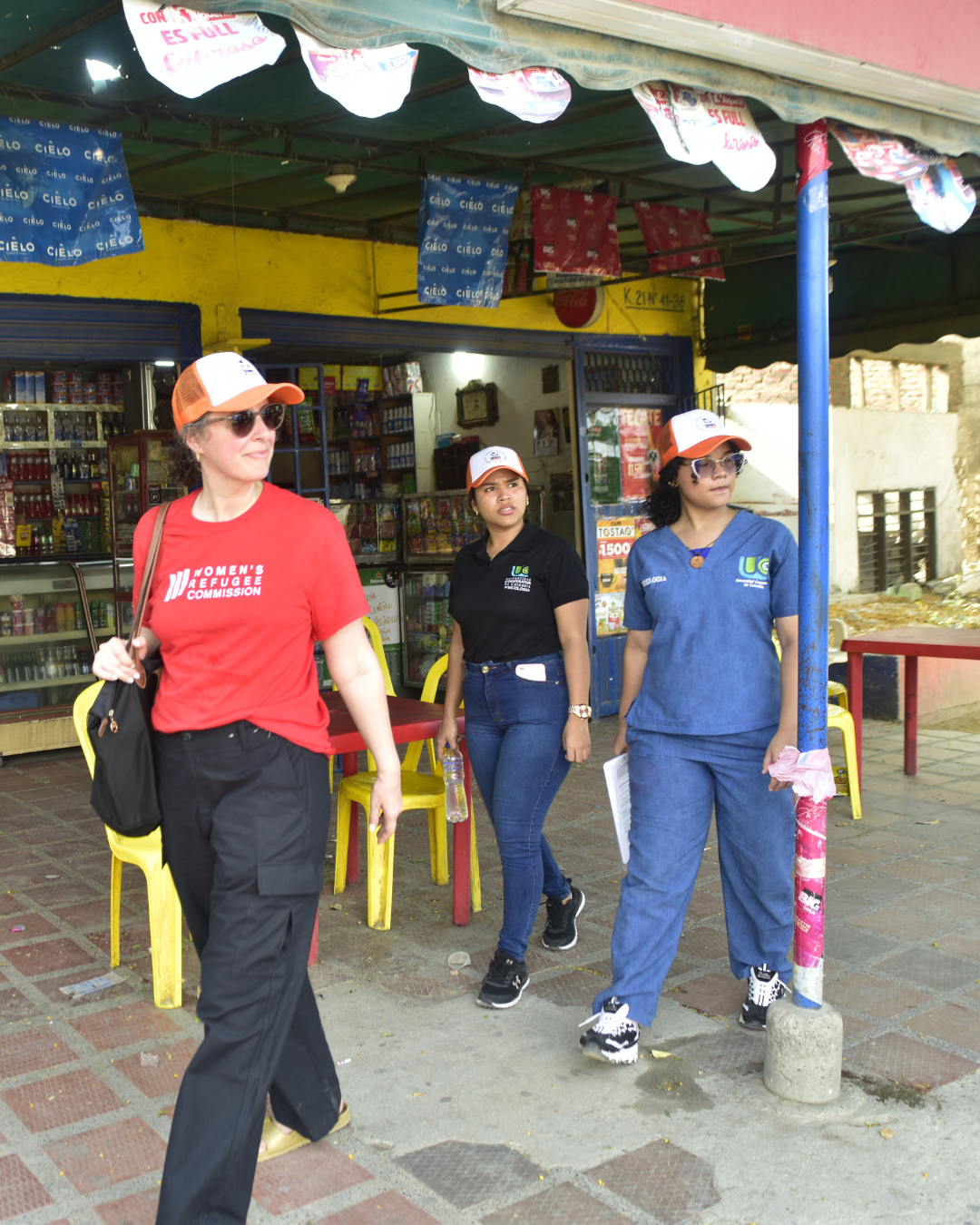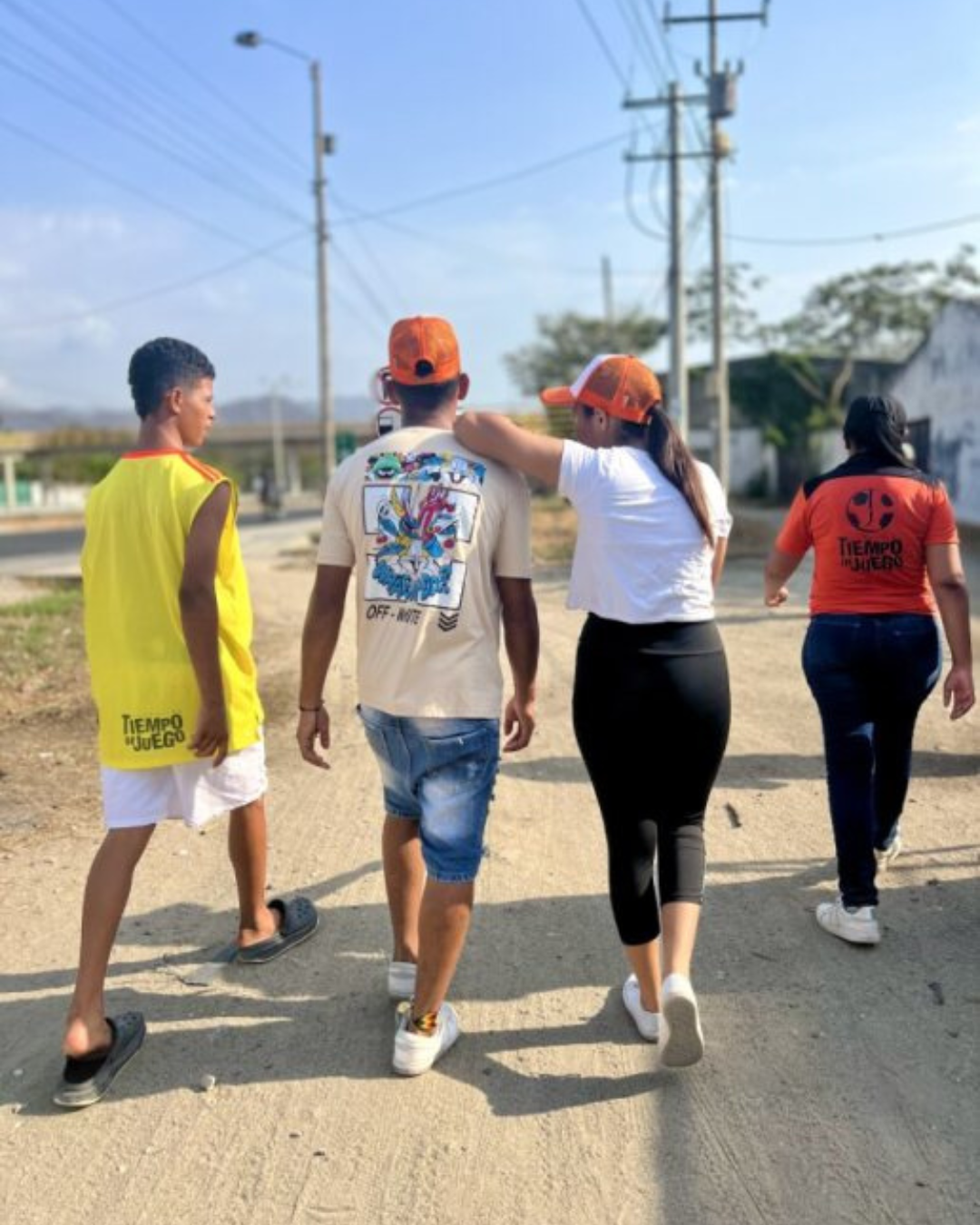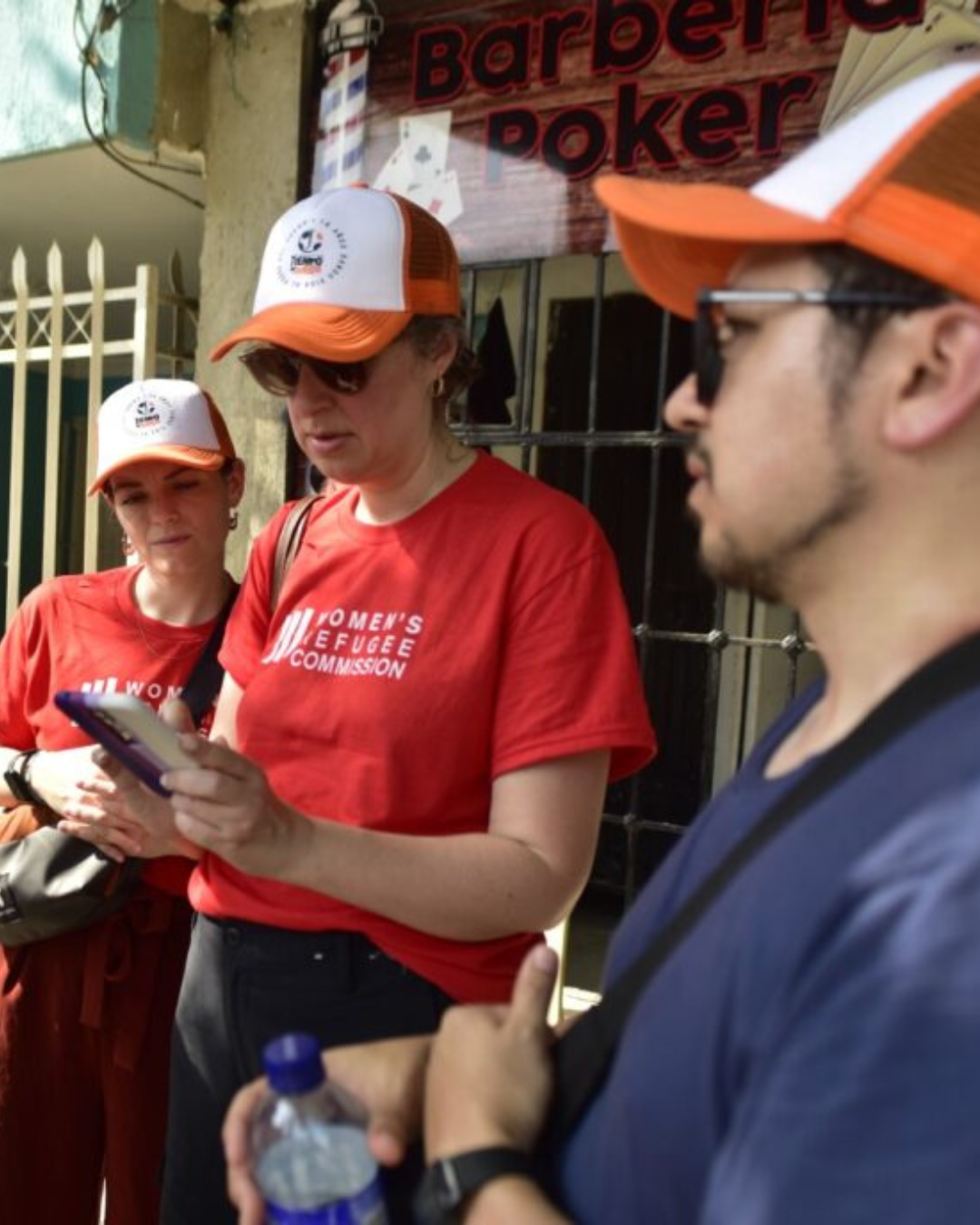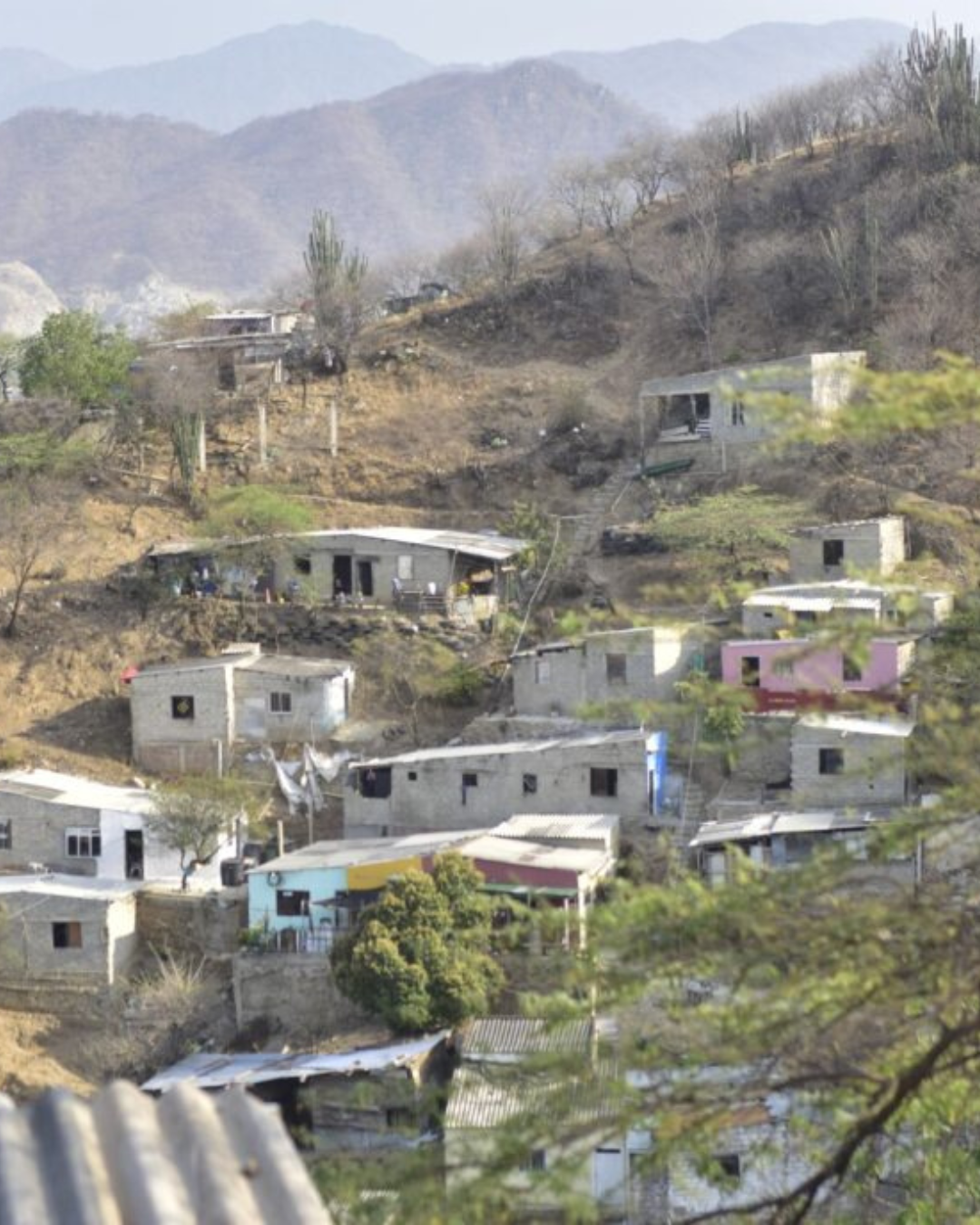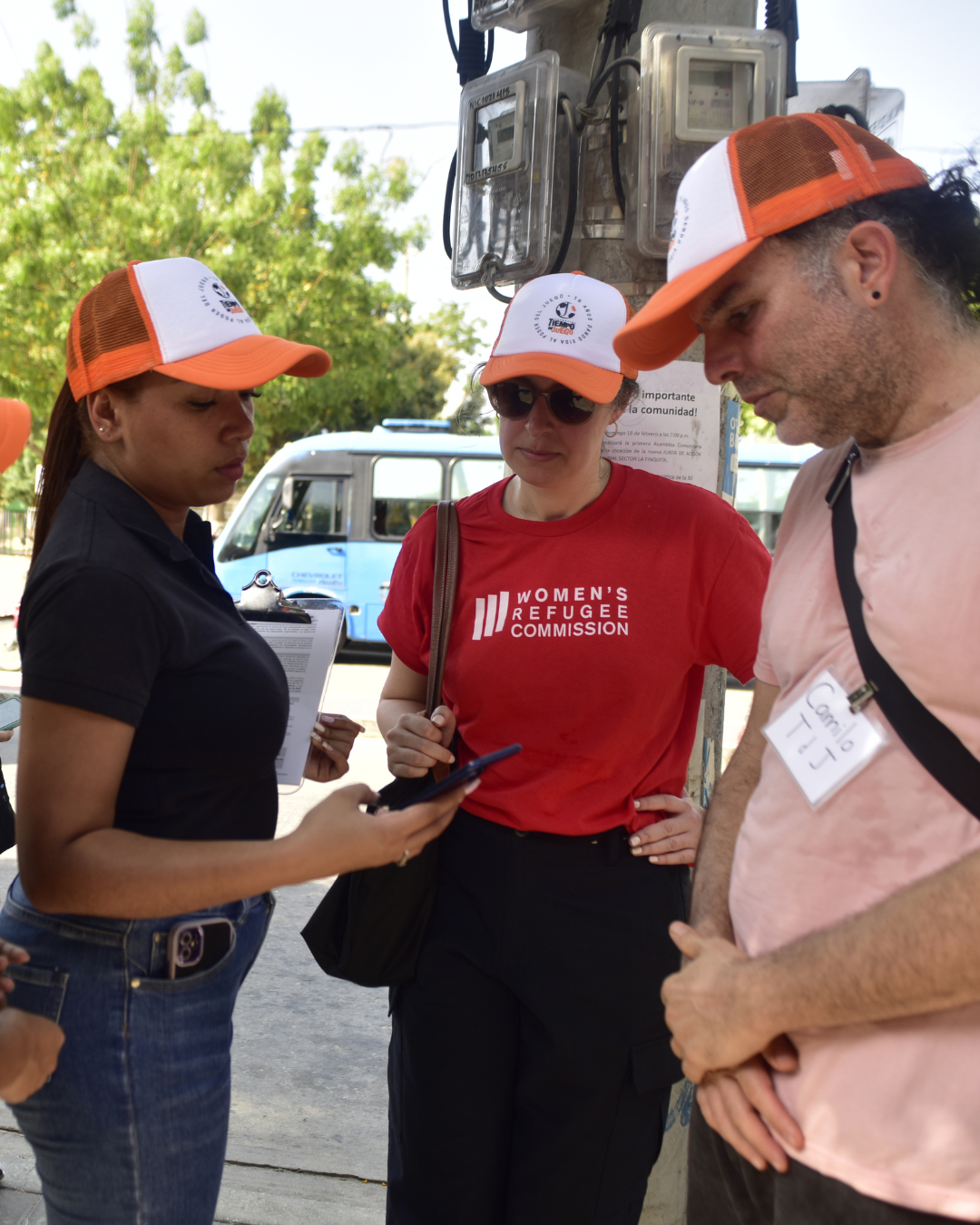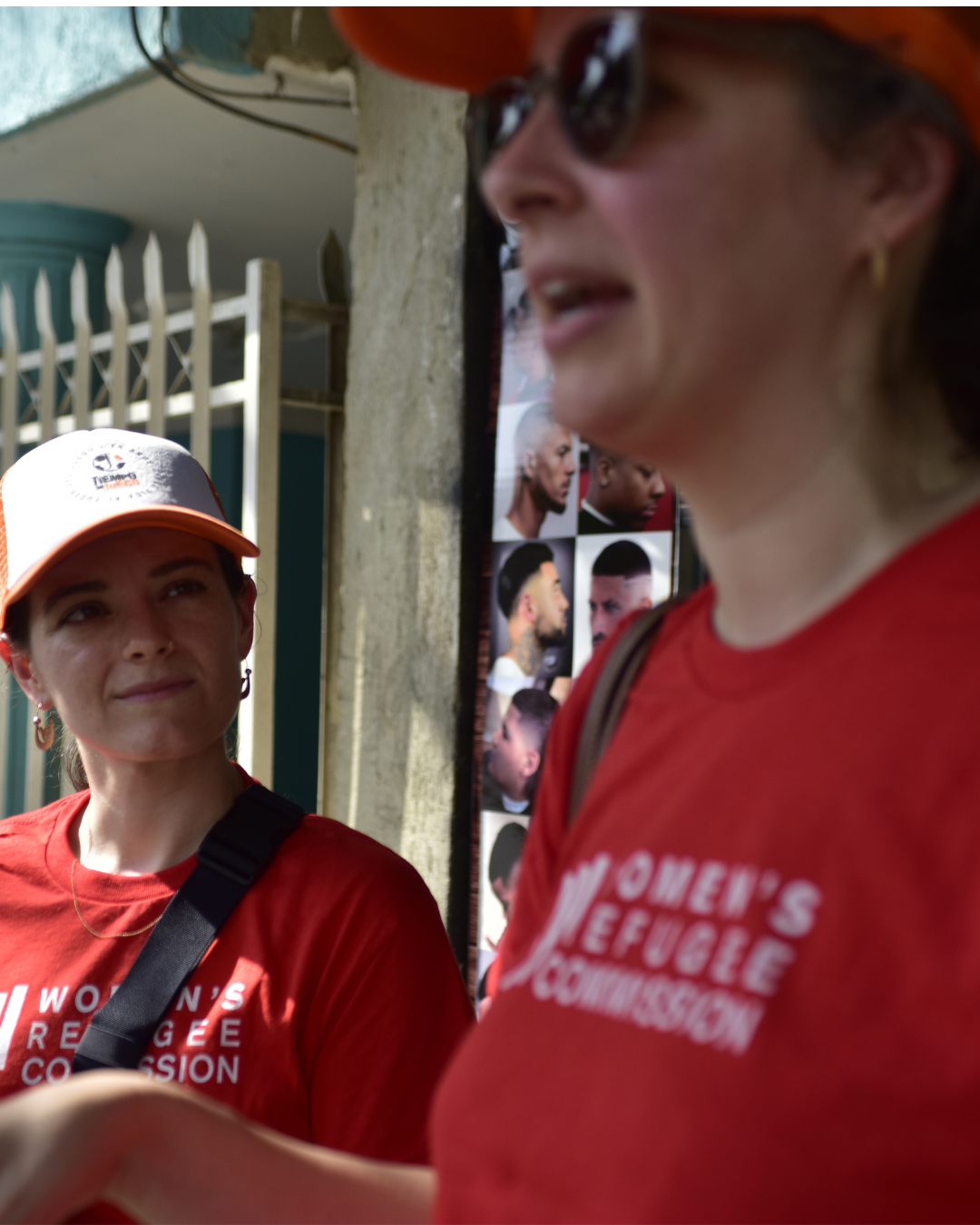Santa Marta is the oldest city in Colombia and a popular tourist destination, known for its beautiful landscapes. It is also home to a large number of Venezuelan migrants and Colombians affected by the decades-long civil conflict. Children and adolescents have been especially impacted by conflict and displacement in Colombia. Between 2020 and 2021, there was an 88 percent increase in conflict-affected children and youth in the country, as well as an increase in the number of children and adolescents recruited into armed groups.
From our decades of experience, the Women’s Refugee Commission (WRC) knows that the needs of displaced and conflict-affected adolescent girls are often overlooked. When humanitarian actors do pay attention, it is usually to ensure access to schooling, but adolescent girls often lack access to sexual and reproductive health information and services, opportunities to develop critical skills for future employment, and develop social networks. Also, adolescent girls themselves are not generally involved in providing their ideas and input into programs that will benefit them.
WRC set out to address these challenges when we created the I’m Here approach. Using I’m Here, humanitarian organizations can identify where adolescent girls live, what their needs are, and what services and resources are (or are not) available for them. The I’m Here approach is used as an entry point to develop more inclusive and holistic programs to serve the needs of adolescent girls.
I recently traveled to Santa Marta to implement the I’m Here approach with Tiempo de Juego, a Colombian organization that builds social connections for adolescents and youth through sports and play. On the first day of my visit, Tiempo de Juego staff and I walked street by street through the La Lucha neighborhood, where Tiempo de Juego is located, to identify existing services, programs, and resources for adolescents.
In settings where WRC has used the I’m Here approach to expand access to opportunities for adolescent girls, including in both refugee camps and urban settings in Bangladesh, Lebanon, and South Sudan, this exercise took several hours, and resulted in upwards of 10 or 20 locations that provided some type of service or program for adolescents.
But in Santa Marta, after just one hour, we were finished, having identified only four locations providing any type of targeted services or programs for adolescents: two schools, one church, and Tiempo de Juego. I began to wonder just how many adolescents here might be excluded from essential opportunities to support them and prepare them for adulthood.
On the third day of my visit, Tiempo de Juego conducted an adolescent mapping exercise, a short survey administered door-to-door that provides a demographic snapshot of the adolescents living in a community. In looking at the results I was, again, surprised. More than 40 percent of adolescents living in the La Lucha neighborhood had participated in Tiempo de Juego’s programming, a much greater program participation rate than in other settings where we’ve worked.
My visit to Santa Marta confirmed that there is no one-size-fits-all plan for addressing the needs of adolescent girls. Since 2014, the I’m Here approach has been used in more than 30 contexts around the world, each of which has unique opportunities and challenges. In Santa Marta, the accessibility of Tiempo de Juego provides an immense opportunity to link adolescent girls to services outside their walkable neighborhoods—something that may be possible thanks to access to public transit. Thinking creatively with Tiempo de Juego about how the I’m Here approach can support what is already a remarkable program reach was refreshing confirmation that the approach is adaptable to varying situations and contexts.
In line with WRC’s philosophy of always working directly with people affected by conflict and crises, in the next phase of the I’m Here approach in Colombia, Tiempo de Juego will be consulting with different sub-groups of adolescents to better understand their diverse and unique priorities and interests for future programming. I am confident that, in doing so, we will be able to address some of the challenges and opportunities for adolescent girls living in La Lucha through ideas and solutions from those who know best: adolescent girls themselves.


